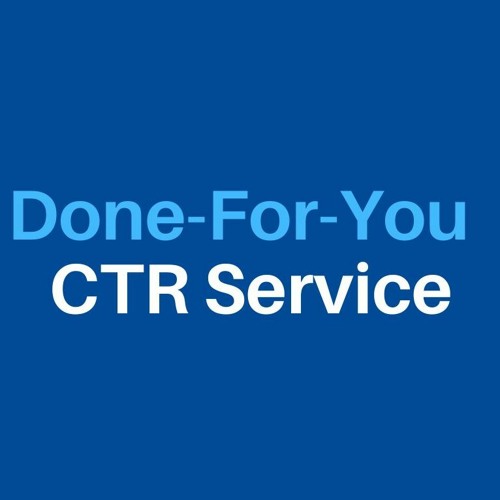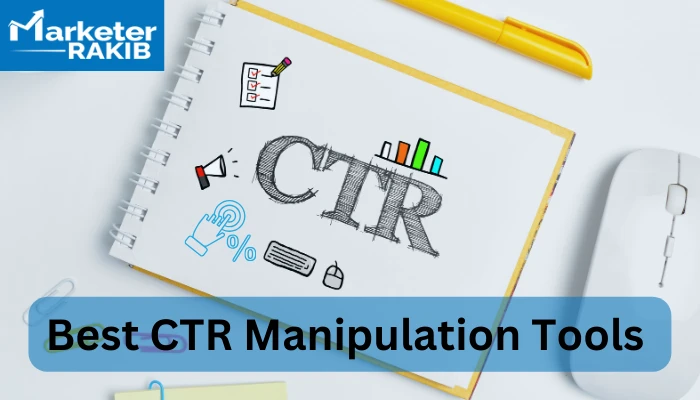Exactly How to Determine the Effect of CTR Manipulation on Your Advertising And Marketing
Understanding the subtleties of click-through rate (CTR) manipulation in advertising and marketing is essential for services making every effort for real individual involvement. By analyzing essential metrics such as conversion rates and bounce rates, online marketers can discover prospective discrepancies that might occur from synthetic enhancements.
Recognizing CTR Manipulation
Comprehending CTR manipulation is important for marketing professionals looking for to optimize their projects and ensure information integrity. Click-through rate (CTR) refers to the proportion of users who click on a specific web link to the total number of users who view the advertisement or web content.
The effects of CTR adjustment extend past simple data distortion; they can weaken trust fund in electronic marketing. When businesses count on inflated metrics, they may purchase inadequate campaigns, inevitably hurting their roi. In addition, platforms might penalize marketers involving in such methods, bring about further ramifications for their marketing efforts.
To successfully combat CTR adjustment, marketing experts need to create an extensive understanding of their data sources and analytics tools. By using innovative monitoring methods and scrutinizing website traffic sources, they can identify irregular patterns and guarantee that their performance metrics mirror authentic individual interaction - LinkDaddy CTR Manipulation. This caution is important for promoting long-term success in an increasingly affordable electronic landscape
Trick Metrics to Evaluate
Reliable analysis of crucial metrics is essential for assessing real performance of advertising and marketing projects and discovering prospective CTR control. One key statistics to consider is the Click-Through Price (CTR) itself, which stands for the ratio of customers that click on an advertisement to the overall variety of users that watch it. An abrupt spike in CTR might suggest manipulation, necessitating further investigation.
Furthermore, keeping an eye on conversion prices is necessary. A high CTR with a low conversion rate might signal that the clicks are not genuine or that the targeting is misaligned (CTR Manipulation Press Release). Assessing bounce prices can offer insight right into individual interaction; a high bounce rate after a click might suggest that the website traffic is not quality-driven.

Devices for Dimension

Furthermore, A/B testing devices such as Optimizely or VWO can help with trial and error with different ad versions to determine which elements drive greater CTR. These tools enable online marketers to analyze real-time efficiency and make data-driven modifications. Social media analytics devices, like Hootsuite or Sprout Social, can additionally be instrumental in understanding CTR within social platforms, offering insights into audience behavior and interaction patterns.
In addition, warm mapping tools, such as Hotjar, can reveal exactly how customers interact with advertisements, assisting to determine where renovations can be made. Combining these tools produces a durable measurement structure, making it possible for marketing professionals to determine the effects of CTR manipulation successfully. Inevitably, the appropriate choice of measurement view tools is important for making educated marketing decisions and enhancing project performance.

Reviewing Long-lasting Impacts
One must think about the long-term impacts of CTR control on total marketing efficiency, as short-term gains can typically mask much deeper implications. Over time, unnaturally blew up click-through prices may cause diminished trust fund from consumers and internet search engine alike. When users repeatedly experience misleading practices, they might become reluctant to involve with the brand, resulting in reduced conversion rates in the future.
Additionally, algorithm updates from platforms such as Google are developed to focus on real interaction over inflated metrics. Subsequently, companies that depend on CTR adjustment might discover themselves penalized, causing a decrease in natural reach and visibility. This can have a plunging result on brand name reputation and customer commitment, inevitably undermining the very objectives that the initial adjustment looked for to achieve.
Furthermore, the data accumulated from adjusted CTR may misguide marketers in their strategy advancement. Counting on skewed data can cause illinformed campaigns that fail to resonate with the target audience, bring about lost sources and missed opportunities. It is essential for marketing professionals to evaluate the long-lasting ramifications of CTR adjustment and focus on sustainable, honest engagement methods for lasting success.
Honest Considerations in CTR Manipulation
In the world of electronic advertising and marketing, moral factors to consider surrounding CTR manipulation are extremely important. While the desire to improve click-through prices (CTR) can lead to short-term gains, the potential lasting repercussions on brand name honesty and consumer trust fund can not be ignored.
Additionally, honest issues reach compliance with policies such as the Federal Profession Payment (FTC) standards, which mandate transparency in advertising and marketing. Falling short to abide by these requirements can reveal services to lawful ramifications and harm their online reputation. Marketing experts need to think about the effects of their approaches on individual experience and the wider her comment is here sector landscape.
Furthermore, the rise of expert system and automation in advertising and marketing provides further moral issues. The capacity for algorithmic predisposition or the exploitation of consumer data raises questions regarding responsibility and fairness. Ultimately, ethical marketing methods need to prioritize openness, sincerity, and respect for the consumer, cultivating long-term connections that transcend plain metrics like CTR. Balancing efficiency with principles is essential for lasting success in the digital industry.
Final Thought
In verdict, measuring the effect of CTR manipulation on marketing needs a detailed analysis of crucial metrics, consisting of click-through rates, conversion prices, and bounce prices. Eventually, a data-driven approach makes certain that advertising methods are effective and straightened with real user interactions.
Understanding the nuances of click-through rate (CTR) adjustment in advertising is important for companies striving for authentic individual interaction.Reliable evaluation of essential metrics is critical for examining the real performance of advertising projects and spotting prospective CTR control.One should think about the long-term results of CTR manipulation on overall advertising efficiency, as short-term gains can commonly mask much deeper ramifications.In the world websites of electronic marketing, ethical factors to consider bordering CTR adjustment are critical.In verdict, measuring the impact of CTR control on advertising and marketing calls for a comprehensive analysis of essential metrics, including click-through rates, conversion prices, and bounce rates.